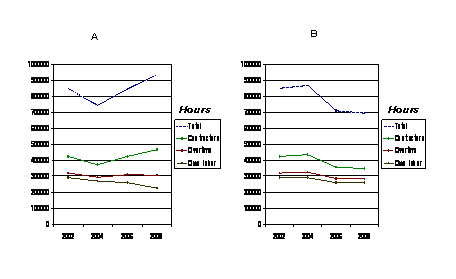Focus on activities that drive cost, not cost alone.
In 1980 I conducted the first seminars titled “Reliability, the future competitiveness factor”. Looking back I realize how true the title of these seminars was. Anyone with financial assets can buy the same equipment and processes.
With the same, or older, manufacturing equipment and processes the last significant competitiveness tool is to increase manufacturing reliability and speed up throughput of product you have sold.
This has of course always been true but in the past 40+ years the increase/decrease of investment in maintenance and capital has gone up or down depending on good or bad financial times.
For many years the industry built bigger and faster machines and manufacturing processes than their competitors. Sooner or later this often resulted in overcapacity and lower prices which, in turn, forced cycles of shut downs and mergers.
Another reason for these cycles is the short term focus on maintenance costs instead of a longer term focus on what drives these costs.
If management of maintenance emphasizes more on long term improvements of reliability and speed of throughput, steady improvements of faster throughput and lower maintenance costs will follow.
Capital and maintenance costs.
- Maintenance costs for the affected assets will go up within the next one to four years because they will require more maintenance.
- Many necessary investments will be hidden in the maintenance budget. If some capital work has to be done, but there is no money in the capital budget, the work will be done anyway using funds from the maintenance budget.

The data in chart 1 is based on a survey of nine plants in four countries. The trend in these plants is clear.
Plants with a higher cost for maintenance have a lower budget for capital. Average for the six plants is a ratio for Maintenance cost to Capital cost of 8.6 to 1 or Capital cost is 11.6% of maintenance cost in these plants.
Long term versus short term.
If a company is driven by next quarter or annual financial results it will be difficult to justify long term investments. Privately held companies are not driven by short term results to the same extent as public companies.
They have more consistent leadership and tend to have less changes of direction to meet shareholders expectations on short term profits. Instead decisions are more based on long term results and long term survival.
Good maintenance has to be managed long term, at least beyond two to three years. One reason for this is that superiority in reliability and maintenance performance is partly about technology, but much more about people. The challenge is to pull maintenance and operations functions together so they work towards the same goals. This requires that many entrenched habits must change and better practices must be put into practice and executed in a disciplined manner.
Technology is the easy part of this equation. Maintenance people like gadgets and new tools. To use these tools and practices in a disciplined manner is another story.
Reactive maintenance is by its character not executed in a disciplined manner and it is easy to fall in the trap to only give recognition for reactive work because it is visible.
Good maintenance practices are more invisible and recognition for these less visible activities is often forgotten. Activities during a break down are very visible and many people are involved, it is also 76% likely that the situation calls for overtime, production is down and there is an urgency to start up.
In this situation maintenance employees are the heroes and we depend on them. In a controlled situation, inspections could have detected the problem early which would allow time to plan and then schedule corrective actions during a scheduled shut down.
The corrective action would then be done in a more invisible manner. This is in a nutshell the change many organizations need to do, and it takes two to three years to change an organization to work in a more disciplined manner.
The reason why it takes time to implement better practices is not that people do not agree with what needs to be done, the reason is that they do not believe the improvement initiative will last long enough before a new initiative is initiated.
Mobility of management and best practices execution.
If your organization does not have very well documented and executed best practices for reliability and maintenance, your organization is at risk to frequently change direction with the arrival of a new manager in a key position.
A poll at www.idcon.com shows that 60% of mills do not have any reliability improvement plans in place for the next 1 to five years. Another poll at the same website shows that mobility of plant management is high.

In the turmoil the world goes through now, mobility of management will most probably increase. This is another occurrence that will create confusion and stalled improvements in reliability and maintenance performance.
Your organization must develop and implement a best practices plan and then ensure that new managers will use their experience to continue to implement best practices within your best practices framework.
If you do that you stand a very good chance to become very successful in your improvement efforts.
A good parallel is safetyprograms. In 1990 the OSHA Total Case Incident Rate for the one industry was 8.91. 16 years later it was 1.88. (Ref. www.ppsa.org). This has been accomplished because it is a long term process with continuous training and education to increase awareness and to change behaviors.
Every incident is noted and acted upon in majority of plants. These results will be achieved also in reliability and maintenance. We need to view this as a process with a beginning but no end. Not as a program with a completion date.
In another survey it shows that over 60% of all safety incidents in maintenance departments occur during reactive work. Planned and scheduled maintenance is always safer to execute than reactive work.
Manage by cost or reliability?
I am convinced that lower maintenance costs is a result of improved reliability and it is never the other way around unless you measure these factors over a short period of time.
Maintenance costs can be lowered in three ways:
- Cut the budget.
- Prevent the need for maintenance.
- Execute remaining maintenance more efficiently.
Cut the budget.
During a market downturn it is tempting and understandable that the focus turn to cost reductions. However, the fact is that a valid maintenance job can never be eliminated. To cut the budget means that work that is eliminated is not valid to do, or it can be deferred to a later date.
In some of the worst cases the focus on cost will result in layoffs of employees instead of improving the efficiency of the work that needs to be done. If you are forced to lay of skilled people based on short term management philosophy, you hopefully know that this will save money on a short term but cost more later.
In addition to the effects you see in the example below you will often be forced to lay off the future of your work force; if you have a unionized workforce your latest employees have to go first. Another negative consequence is the worldwide difficulty to find skilled maintenance craftspeople and this will be more difficult in the years to come.
Prevent the need for maintenance
These activities drive up reliability and drives down maintenance and operations costs.
They include well known activities such as: Operating practices, Alignment of equipment, Balancing of rotating equipment, Lubrication, Filtration, Root Cause Problem Elimination etc.
If all these activities are done with precision, many maintenance activities would be eliminated.
Execute remaining maintenance more efficiently.
Also these activities are well known and will also drive up reliability and reduce costs. They include Condition Monitoring and basic inspections, Work identification, Prioritization, Planning, Scheduling, Recording and ongoing improvement of the steps in this work cycle.
Chart A. In 2002 this plant started to reduce maintenance staffing but did not sustain or improve on maintenance planning and scheduling and preventive maintenance. They focused on cost as priority one. It shows a classical and often repeated example on what will happen when the management focus is short term cost reductions. In the third year overtime and contractor hours increased and in the fifth year total hours exceeded 2002 hours. Maintenance costs went up and reliability was down to 89.6% from 93.5%.
Chart B.If the focus in 2002 had been to implement activities that drive cost such as Preventing the need for maintenance and then executing remaining maintenance more efficiently the scenario would have been as described in graph B. Reliability had remained at 93.5% or higher and manufacturing costs, including maintenance costs would have gone down. The savings in money, improved safety and less energy consumption would have been very significant.
Is better maintenance execution important?
In a declining market better execution of best maintenance practices is more important than ever because it drives up reliability, speeds up product throughput and lowers costs.
Best maintenance practices comprise about 285 elements that must be executed well to achieve proven world class performance. If you like to know more about best reliability and maintenance practices feel free to contact me at [email protected] and I will send you an example.
Better execution of best maintenance practices also has a significant positive impact on energy consumption and safety.
The great thing
The great thing is that excellent results can be achieved with very little or no capital investments. Most organizations have the resources and tools to accomplish substantial improvements.
They just need to do better with what they already have. The investment is mostly in education and training to pull your organization together to work towards the same goals in a disciplined manner.
The bad thing
The only bad thing is that it might take longer time to generate the results you want and need in a difficult market.





